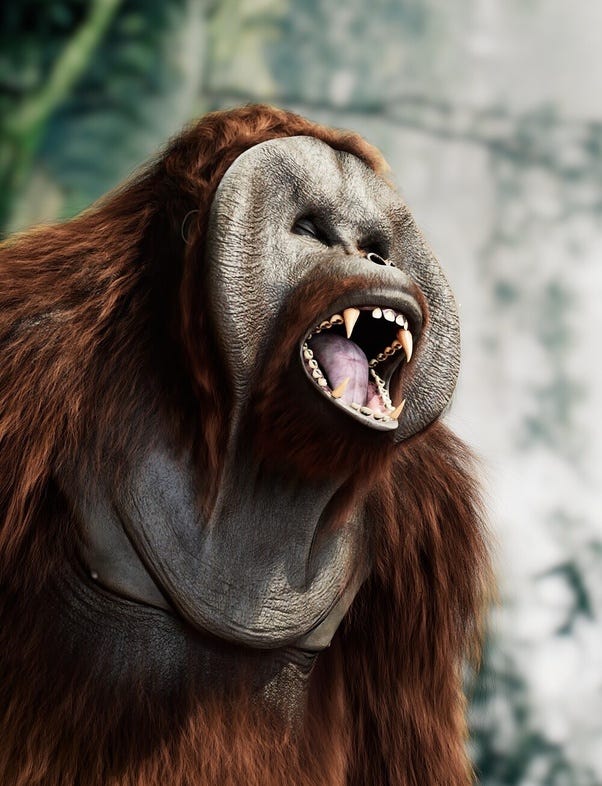Understanding the Extinction of Gigantopithecus Blacki
Written on
Chapter 1: The Enigma of Gigantopithecus
Why did Gigantopithecus Blacki become extinct while its relatives, like orangutans, continue to thrive? Recent findings suggest that environmental changes and dietary limitations played significant roles in their demise.
Researchers have uncovered new insights into the extinction of Gigantopithecus, shedding light on its relationship with modern orangutans.
Section 1.1: Characteristics of Gigantopithecus
Gigantopithecus Blacki, the largest primate known to exist, weighed between 200 to 300 kg (440 to 660 lbs) and stood up to 3 meters (10 feet) tall. Despite their impressive size, our knowledge about them is limited; however, we do know they are closely related to orangutans. Fossil evidence primarily consists of mandibles and teeth, which indicate their herbivorous diet. These ancient apes likely consumed a variety of tough plant materials including stems, bark, twigs, roots, and fruits, particularly from the fig family.
Subsection 1.1.1: The Timeline of Their Existence

Gigantopithecus roamed Southeast Asia approximately 2 million to 250,000 years ago. Initially, it was believed that climate change and pressure from early human populations contributed to their extinction. However, further research reveals that around 330,000 years ago, their habitat began to diminish significantly. Dating of their remains suggests that they became extinct somewhere between 295,000 and 215,000 years ago.
Section 1.2: Environmental Shifts and Their Impact
Around 600,000 to 700,000 years ago, significant temperature changes altered their habitat, which was primarily dense forests interspersed with grasslands. This transformation made it increasingly difficult for Gigantopithecus to find sufficient food sources, particularly fruits. While orangutans adapted by diversifying their diet to include flowers and leaves, Gigantopithecus's size may have hindered its mobility and ability to adapt, forcing it to rely more heavily on fibrous branches and bark.
Chapter 2: Dietary Challenges and Decline
As the habitat changed, the nutritional value of their diet decreased, contributing to a gradual population decline. Gigantopithecus’s specialized diet and reliance on dense forest environments left it vulnerable to extinction as conditions evolved beyond its capacity to adapt.
In this video, "We FINALLY know why the LARGEST APE EVER went extinct," experts discuss the latest findings about the extinction of Gigantopithecus Blacki, exploring the interplay of environmental changes and dietary shifts.
The second video, "Why Gigantopithecus Blacki Went Extinct?!," delves deeper into the reasons behind the extinction of this fascinating primate, highlighting key factors that led to its downfall.
